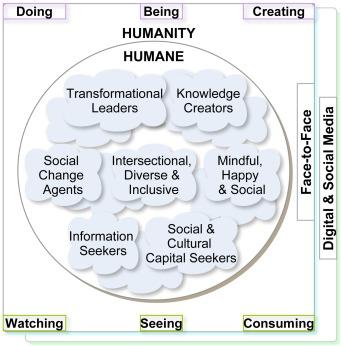Top Policy Frameworks Supporting Inclusive Education: Key Approaches & Best Practices
Introduction
Inclusive education has become a universal aim, ensuring that every learner—regardless of their background, ability, or circumstance—has access to quality education. Achieving this vision requires robust and flexible policy frameworks that guide school systems, support teachers, and foster collaboration among stakeholders. In this article, we delve into the top policy frameworks supporting inclusive education from around the globe. We’ll unpack key approaches, share best practices, and provide practical insights for anyone passionate about making education truly inclusive.
Why Inclusive Education Matters
Inclusive education creates equitable learning environments where all students are valued, respected, and supported. research shows that inclusion leads to improved academic outcomes, social development, and long-term societal benefits. Whether you’re an educator, policymaker, or parent, understanding the foundations of inclusive education helps foster communities where diversity is embraced and barriers to learning are removed.
Top Policy Frameworks Supporting Inclusive Education
Policymakers and education leaders worldwide have developed influential frameworks to promote inclusive education. here are some of the most significant and effective policy frameworks in this area:
1.The United Nations Convention on the Rights of Persons with Disabilities (CRPD)
- Article 24: Recognizes the right of persons with disabilities to education without discrimination and on the basis of equal possibility.
-
Key Approaches:
- Non-discriminatory admission
- Individualized support measures
- Accessible learning environments
- Global Influence: The CRPD has shaped national policies and legislation in over 180 countries.
2. UNESCO’s Salamanca Statement (1994)
- Core Principle: “Schools should accommodate all children, regardless of their physical, intellectual, social, emotional, linguistic or other conditions.”
-
Best Practices:
- Child-centered pedagogy
- Community involvement
- Teacher training in inclusive practices
- Impact: the Salamanca Statement has been a global catalyst for inclusive education reforms.
3. Education for All (EFA) and Sustainable Development Goals (SDG 4)
- SDG 4 Target: Ensure inclusive and equitable quality education and promote lifelong learning opportunities for all.
-
Key Components:
- Universal access to education
- Gender equality
- Addressing marginalized populations
- Effect: EFA and SDG 4 provide a global benchmark for inclusive educational policies.
4. National and Regional Inclusive Education Policies
-
Examples:
- United States: Individuals with Disabilities Education Act (IDEA)
- European Union: Council Conclusions on inclusive education
- Australia: Disability Standards for Education
- Localized frameworks translate international principles into actionable national legislation.
5. Universal Design for Learning (UDL) Framework
- Framework guiding curriculum design to accommodate diverse learning needs.
-
Best Practices:
- Multiple means of portrayal
- Flexible methods of engagement
- Varied assessment approaches
- Widely adopted in North America and increasingly globally.
Key Approaches and Best Practices in Inclusive Education Policy
- Whole-School Approach: Inclusion is driven at all levels, from leadership to classroom practices, fostering a culture of acceptance and support.
- Teacher Professional Development: Continuous training in inclusive pedagogies, differentiated instruction, and assistive technologies.
- Collaboration with Stakeholders: Engaging parents, communities, and multidisciplinary teams in planning and implementation.
- Data-Driven Decision Making: Collecting and using data to identify gaps, track progress, and refine policies.
- Flexible Curriculum and Assessment: Adapting curricula and assessments to meet diverse needs without lowering standards.
- Accessible Physical and Digital Environments: Ensuring that schools, materials, and technologies are accessible to all learners.
- Prioritizing Equity Over Equality: Providing tailored resources and supports that acknowledge individual differences.
Benefits of Effective Inclusive Education Policy Frameworks
- Improved Academic Achievement: Students in inclusive classrooms often have higher achievement levels than those in segregated settings.
- Enhanced Social Skills: Inclusive education supports empathy, respect, and collaboration among peers.
- Reduction in Stigma: Inclusive practices challenge stereotypes and foster self-esteem among all students.
- Long-Term Societal Benefits: Inclusive education contributes to higher employment rates and societal participation among people with disabilities.
- Better Preparedness for Diverse Societies: Students experience and learn how to navigate diversity from a young age.
Practical Tips for Implementing Inclusive Education Policies
- Start with Small Steps: Implement low-cost, high-impact strategies such as peer mentoring and flexible seating.
- Solicit Student Voice: Involve students in decision making to better understand their needs and perspectives.
- Leverage Technology: Use accessible digital resources and assistive tools to bridge learning gaps.
- Continuous Professional Learning: Offer regular workshops and in-service training focused on inclusive practices.
- Foster Inclusive School Culture: Celebrate diversity and create proactive anti-bullying policies.
Case Studies: Inclusive Education Frameworks in Action
Finland’s Inclusive Education System
- Integration of special education services within general education settings.
- Personalized support plans for students with diverse needs.
- Minimal streaming or separation of students based on ability.
India’s Right to education Act (RTE)
- Mandates non-discriminatory access to elementary education for all children aged 6-14.
- Focus on integrating children with disabilities into mainstream schools.
- Provision of resource teachers and infrastructure support.
Canada’s Provincial Inclusion Policies
- Flexible approaches tailored to province-specific contexts.
- Collaborative planning between schools, families, and specialists.
- Strong emphasis on Universal Design for Learning (UDL).
First-Hand Experience: educator’s Viewpoint
“When our school began focusing on inclusive education,we saw incredible transformation—not just among students with disabilities but across the entire class. Collaborative learning,differentiated instruction,and openness to flexibility brought engagement and joy to all. Policy guidance was crucial; it gave us the framework and the confidence to innovate and adapt.”
—Primary School teacher, United Kingdom
Conclusion
Building an inclusive education system is an ongoing journey driven by strong policies, creative practices, and shared commitment. Top policy frameworks—such as the CRPD, Salamanca Statement, and UDL—offer proven roadmaps but must be paired with localized action, meaningful collaboration, and continuous learning. By drawing from global best practices and adapting them contextually, educators and policymakers can ensure that every learner gets the opportunity to thrive. Let’s work together to make inclusive education a lived reality for all.

